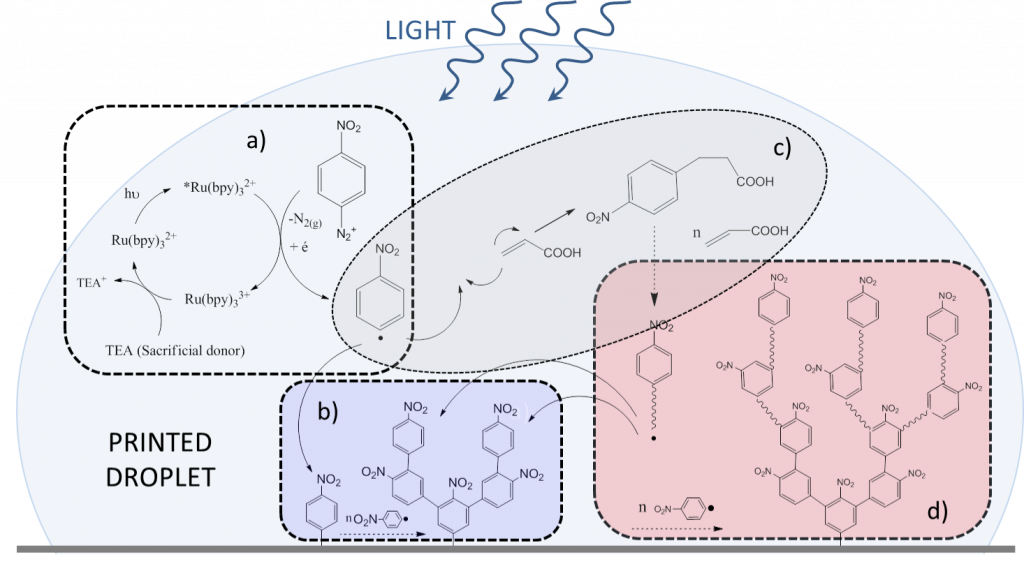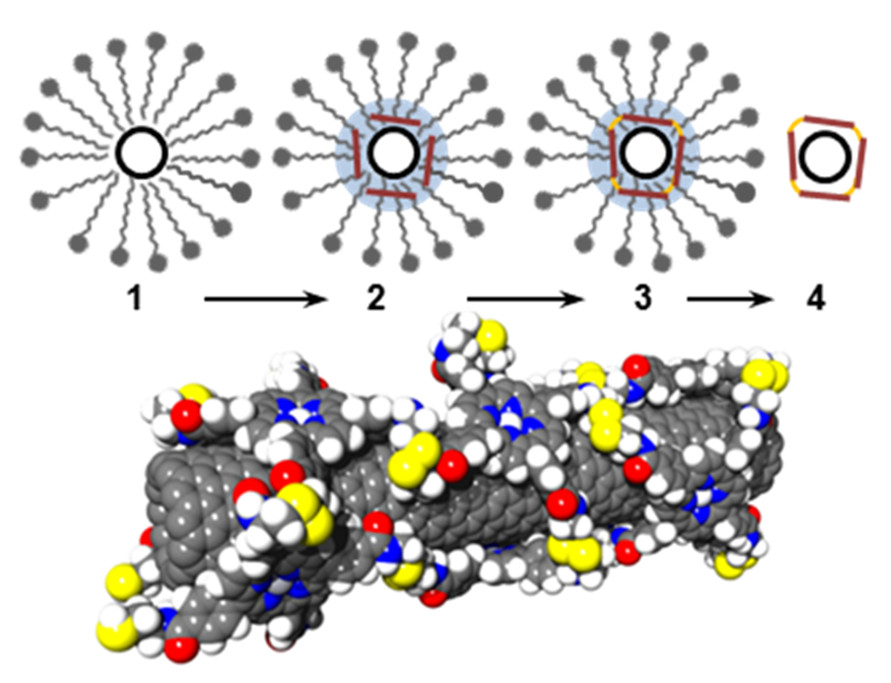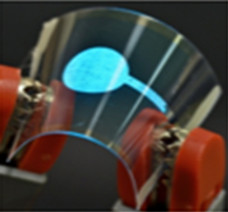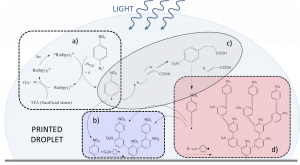Details of LICSEN activities – Back to the LICSEN home page
Chemical Functionnalization of Surfaces

► Mechanisms of surface and nanomaterial modifications
► Application-oriented surface modifications : Graftfast®, Polymer metallization, the SEEP process, Substitution of Cr(VI), Antibacterial surfaces, Surfaces for water depollution
► Local chemical functionnalization using printing techniques

Chemistry of Nanomaterials
► Bottom-up synthesis of graphene quantum dots : single photon emitters
► Fonctionnalization of nanocarbons : carbon nanotubes, fullerenes, graphene
► Graphene oxide chemistry : synthesis and manipulation of graphene oxide, graphene oxide local reduction and electrochemical functionnalization

PV, Catalysis & Photo-catalysis for Energy
► Proton exchange membrane fuel cell and Electrolyzer : bio-inspired catalysts for hydrogen evolution and uptake, oxygen reduction reaction : bio-inspired catalysts, N-enriched carbon nanotubes, non-noble metal catalysts
► Photovoltaic : Perovskite-based solar cells (halide ionic migration (2017), degradation mechanisms (2018)…), OPVs, hybrid SiNWs/polymers solar cells
► PhotoElectroChemical cells : OPVs coupled to MoS3 hydrogen evolution catalyst (2013), all solution-processed organic photocathodes (2016)
► Chemistry for batteries : new materials for Li-orga (2016) and Li-S (2018) batteries

Innovative Technologies for Biology and Healthcare
► Surface chemistry for biology and healthcare : antibacterial surfaces, photo-antimicrobial surfaces, cell antiproliferative surfaces for medical implants, surfaces chemistry for biochips and biosensors
► Drug delivery : irradiation induced drug delivery systems (nano-objets polymères et hybrides sous irradiation, nanoparticules métalliques greffées de polymères pour la nanomédecine)
► Micro/Millifluidics for biology and healthcare : Lab-on-papers, Micro/Millifluidics by printing technologies

Organic & Molecular Electronics
► Organic Electronics : OLEDs, organic spintronics (see also the latest result), organic nano-dielectrics, organic memories, circuits with learning capabilities & memristors
► Nanoelectronics : flexible RF electronics (based on graphene, CNTs and MoS2), CNT-based optoelectronics (including CNT-based IR emitters and detectors), 2D material study by high-contrast BALM microscopy (see articles in Science Advances)
► Printed electronics : inkjet-based process for printed copper electronics (PhD thesis of G. Barral), alternative photonic sintering for Inkjet copper inks (projet ANR Photon'ink)

Sustainability & Waste recycling
Read: “New technologies to recycle electronic waste” (The Conversation, 29/03/2020) and learn more here
► Physical method based pre-concentration
► Critical metals recovery and purification, PCBs dismantling and associated electronic component sorting
► Liquid-liquid and Solid-liquid hydrometallurgical recovery processes, Use of supercritical fluid as a green solvent for e-waste recycling
► Selective nanomembranes
► Rapid process development using microfluidics




